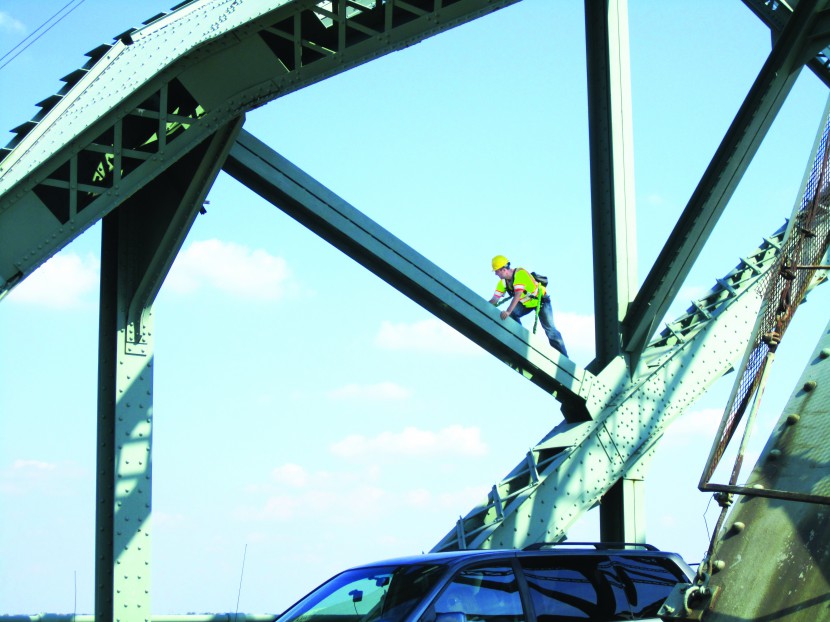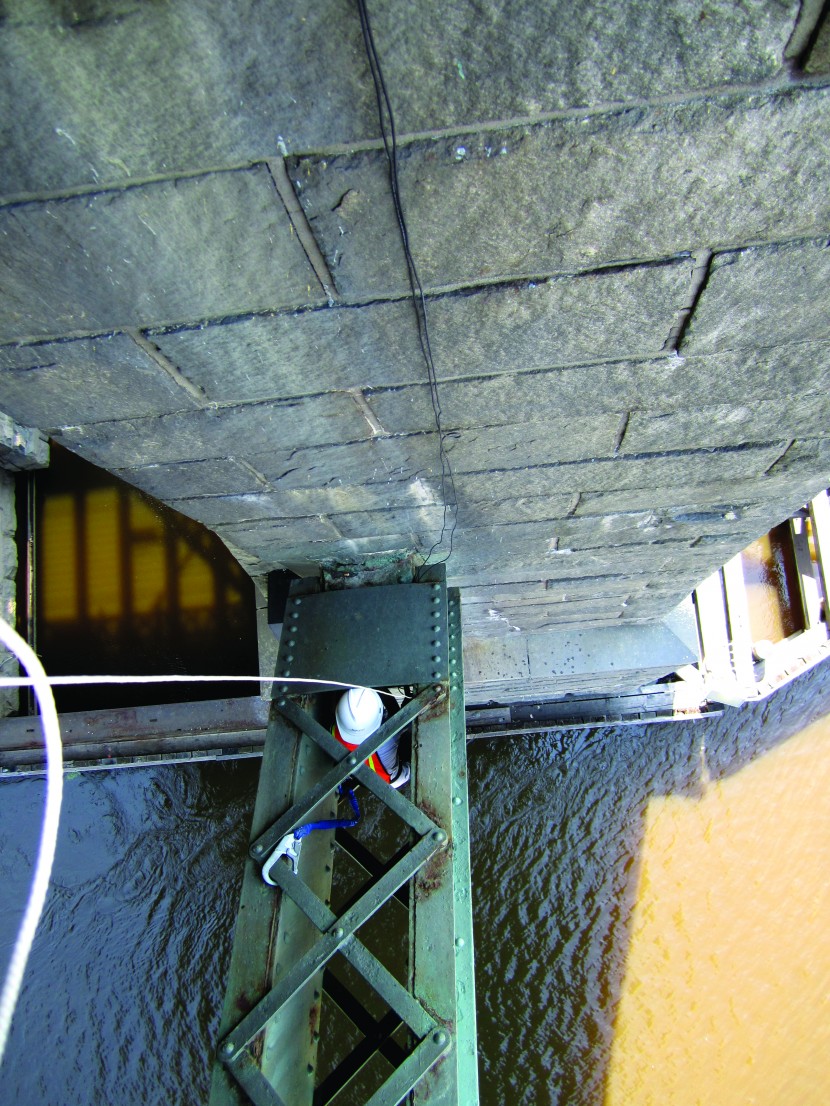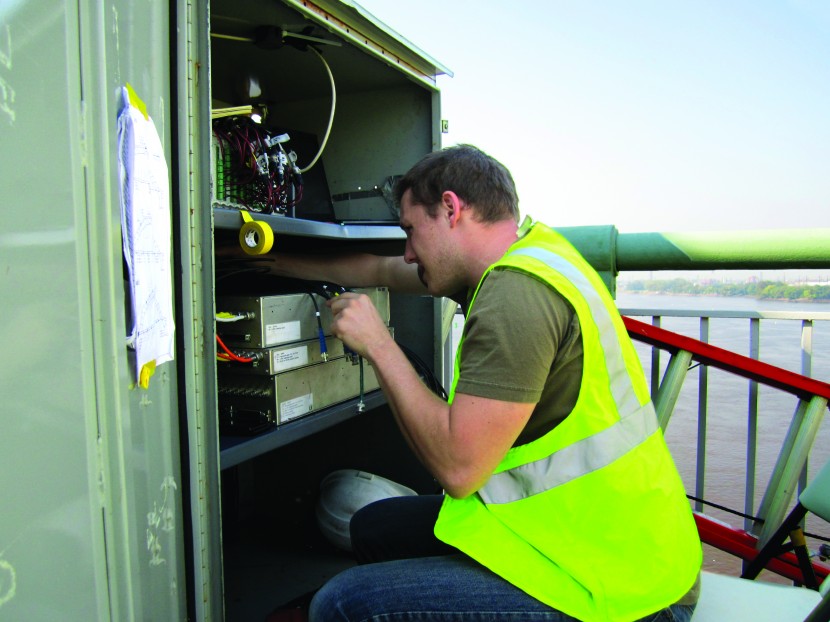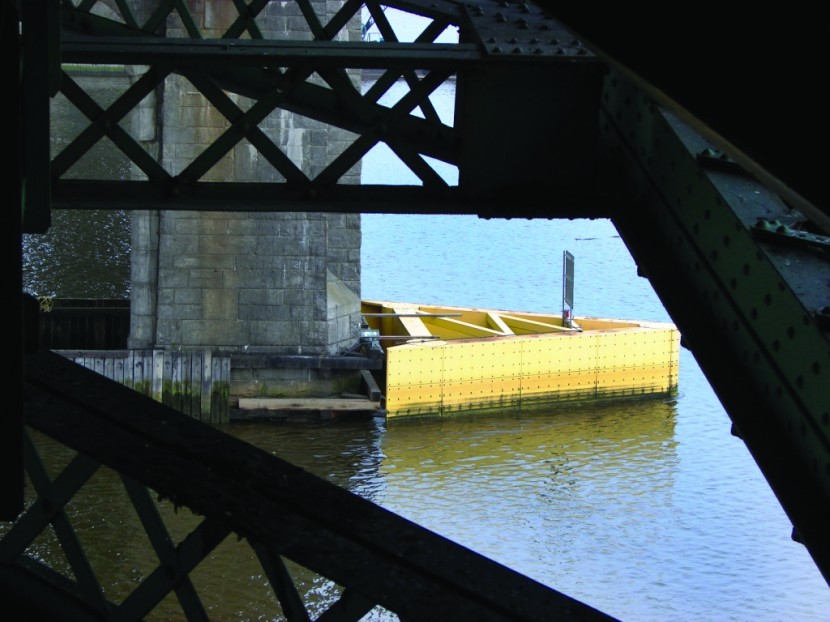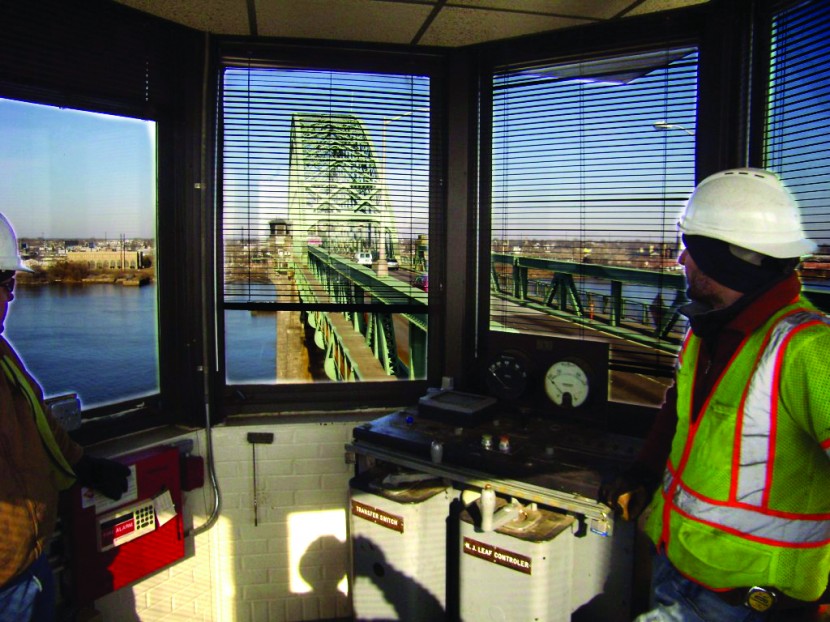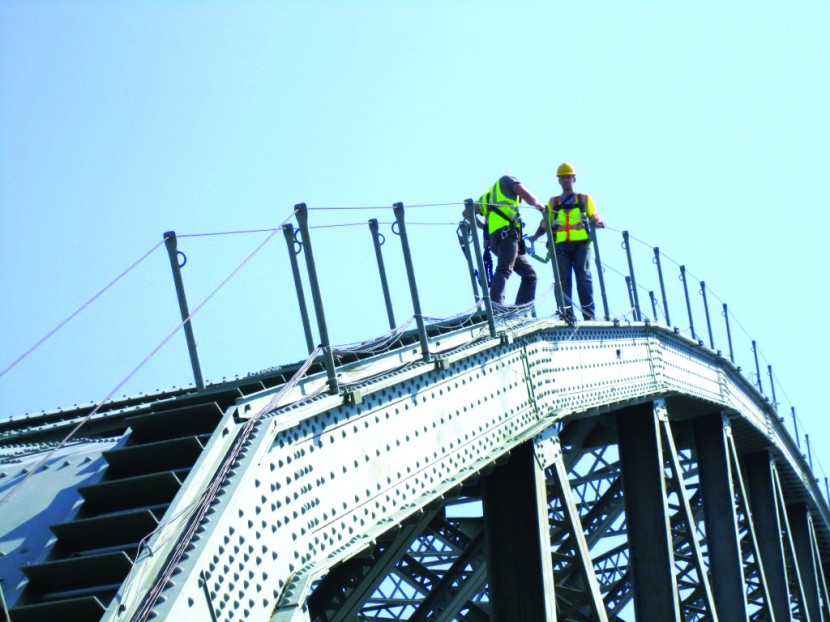In August of 2007, the I-35 West bridge in Minneapolis collapsed during rush hour traffic. The eight-lane bridge fell into the Mississippi River below, killing 13 people and injuring more than 140. This spectacular failure attracted much attention and numerous calls for increased infrastructure funding, but little tangible action was taken. Given the current political climate, increases in funding are untenable, and bridge owners will have to learn to deal with significant budget shortfalls for the foreseeable future. In the absence of resources, bridge owners need effective means of prioritizing investments to ensure the most pressing issues are addressed first.
Franklin Moon, a Drexel professor of civil engineering, studies bridges using sensors and computer simulation to help distinguish true safety issues from superficial ones. And when it comes to bridges, he says, looks can be deceiving.
Right now, bridge inspectors gauge a bridge’s safety based on a visual, qualitative inspection; Moon analogizes this to a doctor’s appointment in which a doctor’s only means of evaluating a patient is to look at the patient. Bridge sensors are to a bridge what EKGs and MRIs are to people—they measure key performances that can’t be seen physically.
“A bridge can be rusty, with pot holes and broken concrete,” he says. “But it can still be safe because it was built 10 times stronger than it had to be; or, a bridge can look great but be really unsafe because of a subtle design error.”
Bridge sensor technology captures the way a bridge responds to changes. Using sensors, engineers are able to have a quantitative measurement of a bridge’s health instead of relying on simply qualitative observations.
One of the current projects that Moon and his colleague, Emin Aktan, are working on is the design and implementation of a state-of-the-art structural health monitoring system on a Philadelphia-area bridge maintained by the Burlington County Bridge Commission—the Tacony-Palmyra that stretches across the Delaware River, connecting Palmyra, N.J., to the Tacony neighborhood in Philadelphia. The bridge has a number of sensors that capture its many behaviors, such as how it accommodates the expansion and contraction of steel and concrete caused by changes in temperature. When the sun rises in the morning, it heats certain elements of the bridge while other parts stay cool in the shade. This means the bridge is constantly fighting itself—a process Moon refers to as the “daily calisthenics.”
Fortunately, the bridge sensors keep Moon and the BCBC in tune with the bridge’s “health.” They know the bridge’s normal “exercise” pattern and can monitor to ensure it continues as expected. “If something were to change—if systems that are supposed to move stop moving—we’d know to take a closer look,” Moon says.
The sensors, placed at different points throughout the bridge, measure acceleration, temperature, rotation and tilt, among other things. The measurements are accessible in real-time through a Web-based visualization portal that tracks the bridge’s behavior. In addition, a detailed, calibrated computer simulation model of the bridge has been developed and is available to examine a series of “what if” scenarios that can help engineers interpret measured data-—a feature that was enormously helpful during Hurricane Sandy.
Throughout the hurricane, engineers were interested in tracking mean wind speeds and gusts, as well as the bridge’s response to these, so they’d be able to determine the safety of the bridge as the storm progressed. As the wind gusts increased in magnitude, the BCBC used the data to know when to shut down the bridge to pedestrians, motorcycles and ultimately all traffic to avoid the possibility of traffic accidents caused by high winds. Although the bridge was closed to traffic during the height of the storm, it was never in any danger itself. In fact, engineers found that the bridge’s stress level was just a fraction of that caused by changes in temperature during a normal sunrise.
In addition to aiding the decision-making process, the real-time information provided by the health monitoring system has become increasingly useful in the classroom. “Students can select any sensor and view its response as cars and trucks cross it, so they can estimate from that reading how heavy the truck is and whether or not it’s overloaded … It’s not just a textbook; it provides a much more tangible picture of a ‘day in the life’ of a bridge.”
While sensors can provide data that could conceivably save millions of dollars and lives, currently they are relegated to signature bridges like the George Washington Bridge in New York City. Moon explains, “With multi-billion dollar bridges—you can easily justify the type of investment that is required.” The cost associated with bridge sensors is simply unrealistic for the nearly 600,000 run-of-the-mill bridges throughout the U.S.
Fortunately, Drexel researchers have developed an instrument capable of acquiring quantitative data across large populations of run-of-the-mill (or short-span) bridges. If sensors are a bridge’s intensive care unit, this instrument can be likened to a stethoscope. The prototype, developed at Drexel, is a self-contained vehicle with an impact device surrounded by sensor arms. The device raises and drops a large mass onto the bridge’s surface to generate a 30,000-pound impact, and the sensor arms measure the resulting vibrations. Once the results are processed, a wealth of information about the bridge is learned.

 _PHOTO_GALLERY ENLARGE
_PHOTO_GALLERY ENLARGE
To examine the accuracy of the prototype, researchers performed a well-established (but costly and time consuming) test that involves closing the bridge and measuring its behavior under a number of heavy trucks. When compared to the Drexel prototype, the results are just about the same, demonstrating that the prototype’s rapid means of capturing critical behaviors is sound.
Standard bridge inspections cost anywhere from $5,000 to $10,000 for short-span bridges (depending on size and access constraints), but provide only a qualitative assessment of a bridge’s visual appearance. This new approach may be implemented for a similar cost, but it is capable of providing accurate quantitative data related to the safety of the structure. As our country ages, so does our infrastructure. It is becoming more necessary to invest time and money into roads and bridges—not only their development, but their maintenance as well. Fortunately, Drexel researchers are looking ahead and producing technologies that will help preserve the safety and integrity of our bridges.

